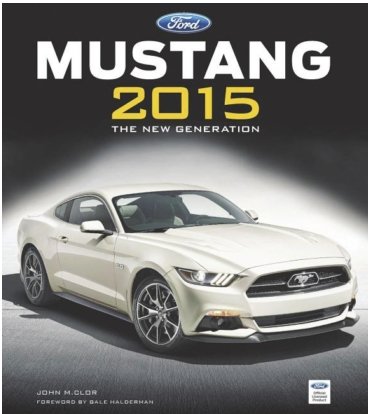 My father was never the kind of person to do something spontaneously, but the 1964 New York World’s Fair put a spell on him. That year, my mom, dad and I jumped in the car and joined millions of other tourists at the forward-looking exhibition.
My father was never the kind of person to do something spontaneously, but the 1964 New York World’s Fair put a spell on him. That year, my mom, dad and I jumped in the car and joined millions of other tourists at the forward-looking exhibition. For five days straight, we woke early and drove a 1961 green Impala 50 miles from a cheap motel somewhere in New Jersey to the site of the World’s Fair. The exposition has been called the “greatest single event in history” by author Joseph Tirella, who has researched the fair extensively. “Tomorrow- Land,” Tirella’s book on the World’s Fair, was published last year.
I was blown away by the monorail, Disney’s Audio-Animatronics, the Bell System Picturephone, Michelangelo’s “Pietà” and even the UniRoyal Giant Tire Ferris wheel, which now resides just off of I-94 near Detroit. But the most enduring cultural icon to emerge from the fair has to be the Ford Mustang.
Fairgoers were able to climb into a white, four-seat Mustang convertible and drive — well, actually be hauled car-wash style on a track — through Disney’s Magic Skyway. It was a very thinly disguised attempt to sell cars. And it worked. The Ford Mustang introduction is still considered one of the greatest moments in public relations. Lee Iacocca, who oversaw the Mustang’s production and launch, saw each of the riders at the fair as a possible customer.
In the summer of 1965, I was still four years away from owning my first Mustang when my dad came home in a light green 1966 Mustang, parked it in our driveway and tooted the horn. My 45-year-old dad was all smiles when my mom ran out hugged him — and then asked, “How much was it?”
A few years later I bought my Mustang, a 1969 4-speed Meadowlark yellow convertible with a dark lime-green vinyl roof. In the mid-1970s, the family’s 1966 Mustang found a home in my driveway. My wife and I would later buy a slimmed down, silver 1979 Mustang — one of the car’s low points for reliability.
The 1964 1/2 Mustang, a mid-year introduction, was a huge hit, with more than 22,000 orders on the first day. More than 303,000 of the cars were sold in the first year alone. Manufactured at Ford’s River Rouge Complex, the car is considered the first affordable American sports car. It was initally priced at $2,368, including bucket seats, a short deck, low profile chassis and elongated hood. The eight-cylinder, 210 horsepower engine was a popular option and it made the lightweight automobile scream. Thankfully, clutches were cheap.
A lot was riding on the Mustang, coming in the wake of Ford’s absolutely abysmal introduction of the Edsel in 1958. Thanks largely to its unique styling, the Mustang almost instantly became part of ‘60s pop culture. Who can forget Steve McQueen in the movie “Bullitt” racing through the streets of San Francisco in a GT Mustang fastback or Wilson Pickett singing “Mustang Sally?” Motown Records even shot video for “Nowhere to Run,” by Martha and the Vandellas, featuring the group dancing and singing through the Rouge River assembly line.
Thanks to racing and design legend Carroll Shelby, the brain behind the Ford Cobra, later iterations of the Mustang evolved into true muscle cars. The car’s reputation is very important to Ford. So much so that the company hired John Clor, an enthusiastic communications manager, to promote and protect the cars reputation among owners, potential buyers and the media. Prior to joining Ford, Clor worked for 15 years at the Detroit News and spent time at several auto-related businesses, including a sevenyear stint at AutoWeek magazine.
Clor is responsible for online content for the company’s blog and tweets and for monitoring social media. In addition to working for Ford, Clor is also a longtime Mustang enthusiast. He was able to track down his first Mustang, a 1977 King Cobra, and repurchase it.
“How many owners are lucky enough to find their first Mustang?” he asked.
Clor also writes a popular column for the Mustang Times, the official publication of the Mustang Club of America. The group boasts tens of thousands of members, and its Facebook page has nearly 2 million followers. Clor has also authored two books on the Mustang, 2007’s “The Mustang Dynasty” and the recently released “Ford Mustang 2015: The New Generation.”
“Ford Mustang 2015” tells the inside story behind the creation of this sixth generation of Mustangs. Clor, with his insider status, was given unrestricted access to the design and production process. He said he wanted to tell the story of the launch through the people who built it. Clor clearly loves his job, but he admits that Mustang owners and enthusiasts probably help sell more cars than advertising.
“Mustang has a brand you can believe in,” he said. “And unlike the Camaro, Mustang didn’t have to go away to find itself.”
John Clor
Author talk 1-2 p.m. Saturday, Jan. 9
FREE Library of Michigan 702 W. Kalamazoo St., Lansing (517) 373-0630, michigan.gov/ libraryofmichigan
Support City Pulse - Donate Today!
Comments
No comments on this item Please log in to comment by clicking here